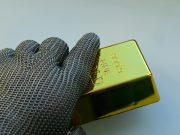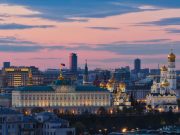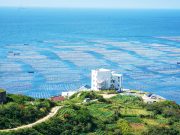(SINGAPORE 2025.11.11)While the number of Chinese tourists visiting Singapore via guided coach tours to popular attractions has sharply declined, those opting for high-end, free-and-easy, and flexible travel experiences are rising rapidly, Chinese media reported.
Given Singapore’s compact size, renting a private car makes it easier and faster to reach any destination they desire. They are also very accommodating with their car rental budget, prioritizing comfort and convenience during their travels on the island, observed ctcnn.com, a Chinese tourism information platform.
Ctcnn noted that the once-familiar sight of Chinese tourists arriving at Changi Airport and being whisked into the city bus by bus in matching-hat tour groups has all but disappeared. Correspondingly, private tour services have surged, as many Chinese tourists now favor booking private cars for half-day, full-day, or two-day excursions in Singapore.
Gan Zhengguang, marketing director of Mandarin Oriental Singapore, told ctcnn that he saw a striking shift among Chinese guests staying at the hotel over the past two years — a significant increase in high-net-worth families and silver-generation travelers.

“Chinese guests make up over a third of our hotel occupancy, representing our largest source of overseas visitors,” Mr Gan disclosed. He added that although the share of Chinese guests has stayed almost the same in recent years, their visitor profile has changed in remarkably significant ways.
According to Mr Gan, Chinese travelers in Singapore have subtly changed their travel habits: extended stays in hotels, sometimes for a week or more; focusing on relaxation rather than rushing through sightseeing, enjoying activities like swimming, cycling, and beach strolls; skipping popular photo spots in favor of experiencing local life and exploring HDB neighborhoods; combining Michelin-starred dining with visits to heartland hawker stalls; and seeking off-the-beaten-path attractions while immersing themselves in concerts, exhibitions, and international cultural events.
Since the pandemic, Chinese tourism in Singapore has undergone a profound transformation, noted ctcnn. This became more apparent following last year’s China–Singapore visa exemption agreement, which triggered a notable surge in Chinese visitors to Singapore.
Unexpectedly, what was meant to be a mutually beneficial exchange instead stirred up numerous complaints. Among Chinese travelers and in China’s domestic discussions, one issue kept coming up—Singapore was simply too expensive. Some media even warned that a single trip there could wipe out one’s savings. This was not a reflection on Chinese tourists, nor was it Singapore’s fault, remarked ctcnn.
This has led many Chinese travelers seeking “more with less” to recognize that there are plenty of other options across Southeast Asia. Meanwhile, Chinese tourists with ample budgets and a taste for premium experiences increasingly favor Singapore, with their numbers rising rapidly.
In response, Singapore is constantly enhancing its services and infrastructure to appeal to high-end Chinese tourists, ctcnn pointed out. Ctcnn was most struck by how quickly Singapore’s tourism infrastructure has evolved —sometimes even more efficiently than China’s famed construction machine.
September last year, the Mandarin Oriental Singapore reopened following a US$100 million (about S$132 million) renovation. In February, Universal Studios Singapore unveiled its Minions-themed zone, while Mandai Wildlife Reserve launched the Rainforest Wild Asia. In July, the SEA Aquarium re-opened as the threefold-larger Singapore Oceanarium.
That same month, Marina Bay Sands began construction of a new 55-story luxury hotel. In October, Singapore opened its first all-villa hotel resort, Raffles Sentosa.
It is evident from these new and renovation projects that Singapore seeks to offer wealthy, leisurely Chinese travelers an enhanced tourism experience. This year, the Singapore Tourism Board rolled out a campaign called “Anyway it’s fun” for the Chinese market, targeting five key visitor segments: wellness enthusiasts, food lovers, urban explorers, entertainment seekers, and the silver-aged travelers.
To cater to China’s affluent, leisure-focused senior travelers, the Singapore Tourism Board held a “Senior Traveler Product Design Competition” in July to August this year, inviting Chinese travel companies to propose innovative offerings for the segment. For high-net-worth Chinese families, Singapore has partnered with Asia’s first Disney cruise ship—the Disney Adventure—which will homeport in Singapore and offer regional itineraries.
Mr Gan shared with ctcnn that the cruise is attracting a substantial number of high-net-worth Chinese families, many of whom choose to stay at the Mandarin Oriental Hotel before or after their voyage. He estimated that even if just 10% of these families book his hotel for each sailing, it would still provide a dramatic lift to the hotel’s performance.
In capturing high-end young Chinese free-and-easy travelers, Taylor Swift’s concert has set a successful precedent. Moving forward, Singapore is poised to host more international superstar concerts, performing arts events, and sports competitions, continually attracting Chinese fans to attend and spend.
According to official data, Singapore welcomed 12.9 million foreign visitors from January to September this year, up 2% compared with the same period last year. The top three sources were China, Indonesia, and Malaysia, with 2.5 million, 1.8 million, and 932,000 visitors, respectively. Chinese tourists dominated in terms of spending, contributing S$2.3 billion in revenue.
Even if the number of Chinese tourists visiting Singapore this year does not fully reach the 3.6 million seen in 2019, Singapore no longer measures success by this figure alone. After all, the very dynamics of why Chinese travelers come to Singapore have fundamentally shifted, concluded ctcnn.





































